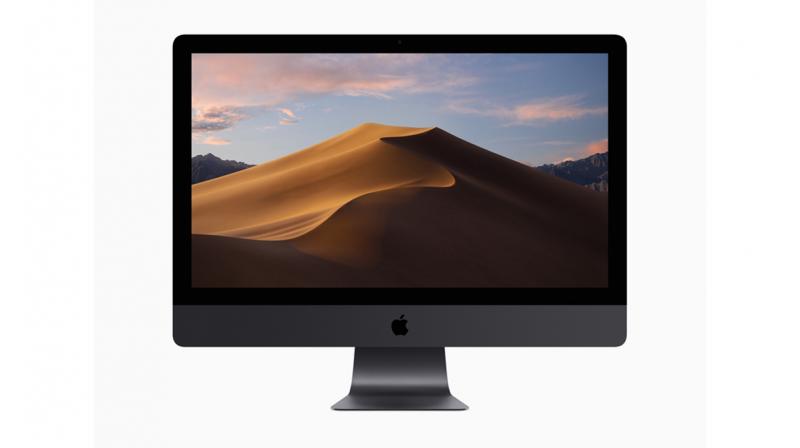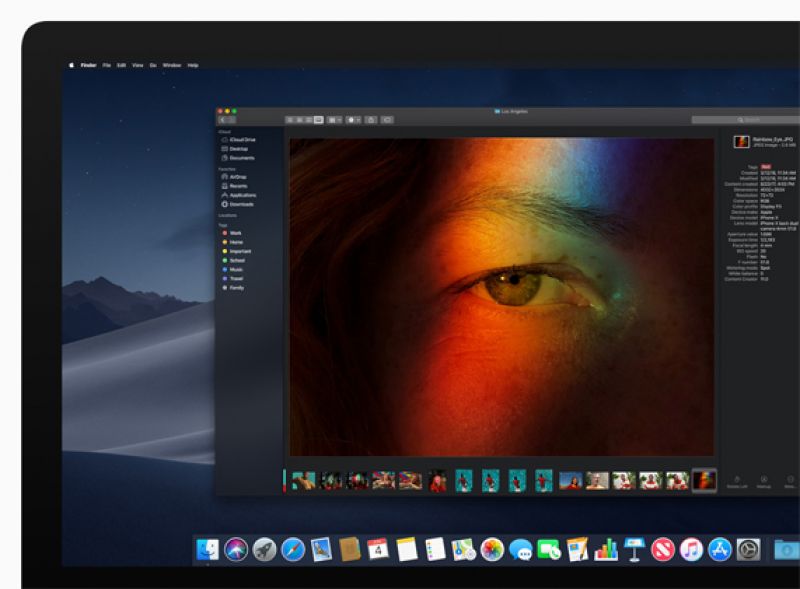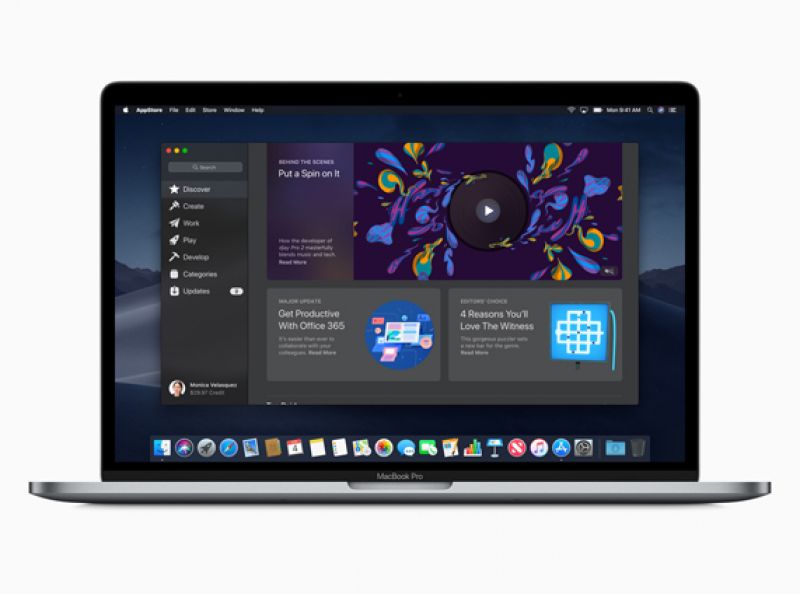Apple debuts macOS Mojave with all new Dark Mode
Apple's macOS Mojave introduces new features such as Dark Mode, Stacks, FaceTime group calling and a redesigned Mac App Store.

Prior to WWDC, there had been rumours that Apple was going to introduce an all-new Dark Mode feature but nothing was set in stone. At the keynote, Apple previewed macOS Mojave, the latest version of their Mac-based operating system. In macOS Mojave, a new Dark Mode transforms the desktop with a new look that puts the focus on user content. The new Stacks feature organises messy desktops by automatically stacking files into groups. Familiar iOS apps, including News, Stocks, Voice Memos and Home, are now available on the Mac for the first time. As is the case with iOS 12, FaceTime now adds support for group calling, and the Mac App Store gets a full redesign featuring editorial content and the addition of apps from developers, including Microsoft, Adobe and others.

macOS Mojave users can switch to Dark Mode to transform their desktop to a darkened colour scheme, putting the focus on user content while controls withdraw into the background. Users can toggle between a light and dark desktop, and built-in Mac apps like Mail, Messages, Maps, Calendar and Photos all include Dark Mode designs. macOS Mojave also features a new Dynamic Desktop that automatically changes the desktop picture to match the time of day. An API is available so developers can implement Dark Mode in their apps.

Stacks for the desktop can organize even cluttered desktops by automatically stacking files into neat groups based on file type. Users can customize their Stacks to sort based on other file attributes like date and tags. Finder also gets a significant update in macOS Mojave with an all-new Gallery View that lets users skim through files visually. The Preview Pane now shows all of a file’s metadata, making it easier to manage media assets. Quick Actions allow users to do things like creating and password-protect PDFs and run custom Automator Actions on files right from Finder.
Quick Look provides a fast, full-size preview of a file, allowing users to rotate and crop images, mark up PDFs and trim video and audio clips without ever opening an app. In macOS Mojave, handy apps including News, Stocks, Voice Memos and Home are now available on Mac for the first time. In the News app, articles, photos and videos look great on the Mac display and users can follow their favourite publications from one app. With Home, Mac users can control their HomeKit-enabled accessories to do things like turn lights off and on or adjust thermostat settings without having to step away from their computer. Voice Memos makes it easy to record personal notes, lectures, meetings, interviews and song ideas, and access them from iPhone, iPad or Mac. Stocks deliver curated market news alongside a personalized watch list, complete with quotes and interactive charts.
Group FaceTime makes it possible to chat with multiple people at the same time. Participants can be added at any time, join later if the conversation is still active and choose to join using video or audio from an iPhone, iPad or Mac — or even participate using FaceTime audio from Apple Watch.

Since its launch in 2011, the Mac App Store has transformed the way users download and install software for the Mac, and today it remains the single largest catalogue of Mac apps in the world. In macOS Mojave, the Mac App Store gets a complete redesign with a new look and editorial content that makes it easy to find the right Mac app. The new design highlights new and updated apps in the Discover tab, while tabs for Create, Work, Play and Develop help users find apps for a specific project or purpose. A number of apps from developers are also coming soon to the Mac App Store, including Office from Microsoft, Lightroom CC from Adobe and more. As always, users can download apps from the Mac App Store with confidence that Apple has approved them for safety and security.
Enhanced privacy and security remain a top priority in macOS Mojave. In Safari, enhanced Intelligent Tracking Prevention helps block social media “Like” or “Share” buttons and comment widgets from tracking users without permission. Safari now also presents simplified system information when users browse the web, preventing them from being tracked based on their system configuration. Safari now also automatically creates autofills and stores strong passwords when users create new online accounts and flags reused passwords so users can change them. New data protections require apps to get user permission before using the Mac camera and microphone or accessing personal data like user Mail history and Messages database.
Click on Deccan Chronicle Technology and Science for the latest news and reviews. Follow us on Facebook, Twitter.
